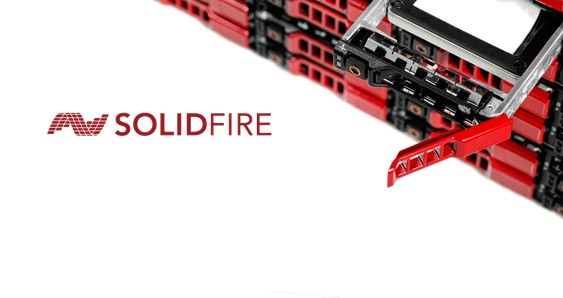In a previous blog, I talked about predictable performance and how it can have a huge impact on your any business. In this blog, I’ll go into detail on another aspect of predictability within the SolidFire array.
But before we start, I’d like to address how we refer to SolidFire as a product. I’m not happy using the term array. SolidFire is so much more than a storage array, in the same way that a Ferrari GT250 California is so much more than a car. As it’s designed for the next generation data centre, I think we should be referring it to as a “next generation array” or NGA.

So let’s start by taking a look at the predictability of this NGA in terms with how it deals with failures.
One of the many reasons SolidFire does so well in the service provider space is it can deal with a wide range of possible failure scenarios. It’s so good at this, in fact, that we even refer to it as a “self-healing” system. This means SolidFire can cope with disk and node failures, hardware upgrades and replacements, and software upgrades ALL without downtime. The loss of a disk/controller/shelf initiates a fully automatic self-healing process—which, by the way, does not affect gQOS at all (for an explanation on gQOS, see my previous post).
For those of you who may be new to the technology, SolidFire as a Tier 0 storage technology does not use RAID (redundant array of independent disks) protection. Instead it uses something that is referred to as the SolidFire Helix.
Usually deployed in a “double Helix,” this core part of the operating system provides cluster-wide RAID-less data protection while avoiding single points of failure. If a failure does occur, it “self-heals” the whole cluster and restores redundancy. What does that translate to in terms of exposure? Try less than 10 minutes for a drive failure and less than 1 hour for a node failure! Now that’s next generation.
Another distinguishing feature of SolidFire is their proactive philosophy when it comes to support. Available to every customer, Active Support is divided into three key services:
• 24/7 support with immediate access to a level 3 support engineer
• Secure Assist: remote assistance over a secure connection
• Active IQ: real-time telemetric data and trending analysis SaaS

Active IQ is the main attraction in the Active Support toolset. It allows you to visualise problems and challenge areas at varying levels of granularity, giving you the ability to better anticipate their outcome and undertake any proactive measures. Allowing you to model for “what if…” scenarios and accurately envisage how to maximise your investment, Active IQ receives telemetric data in 10 second intervals, and allows you to perform performance modelling and historic trending with ease. You can also enable real-time, customisable alerts for what YOU want to know about. Just think of the icons on the above graphic as blades on a Swiss army knife and you get to personalise the multi-tool.
Not only can the NGA guard against data corruption in the case of hardware failures and protect during planned downtime and upgrades, it can balance its workload around the cluster it can help plan the future and reduce the risk of exposure during an outage and automatically regain redundancy to provide data availability without impacting performance.
So when you look at it the SolidFire NGA is more predictable than Nostradamus watching a Roland Emmerich film whilst listening to a metronome waiting for the sun to rise. And it already knows the answer.